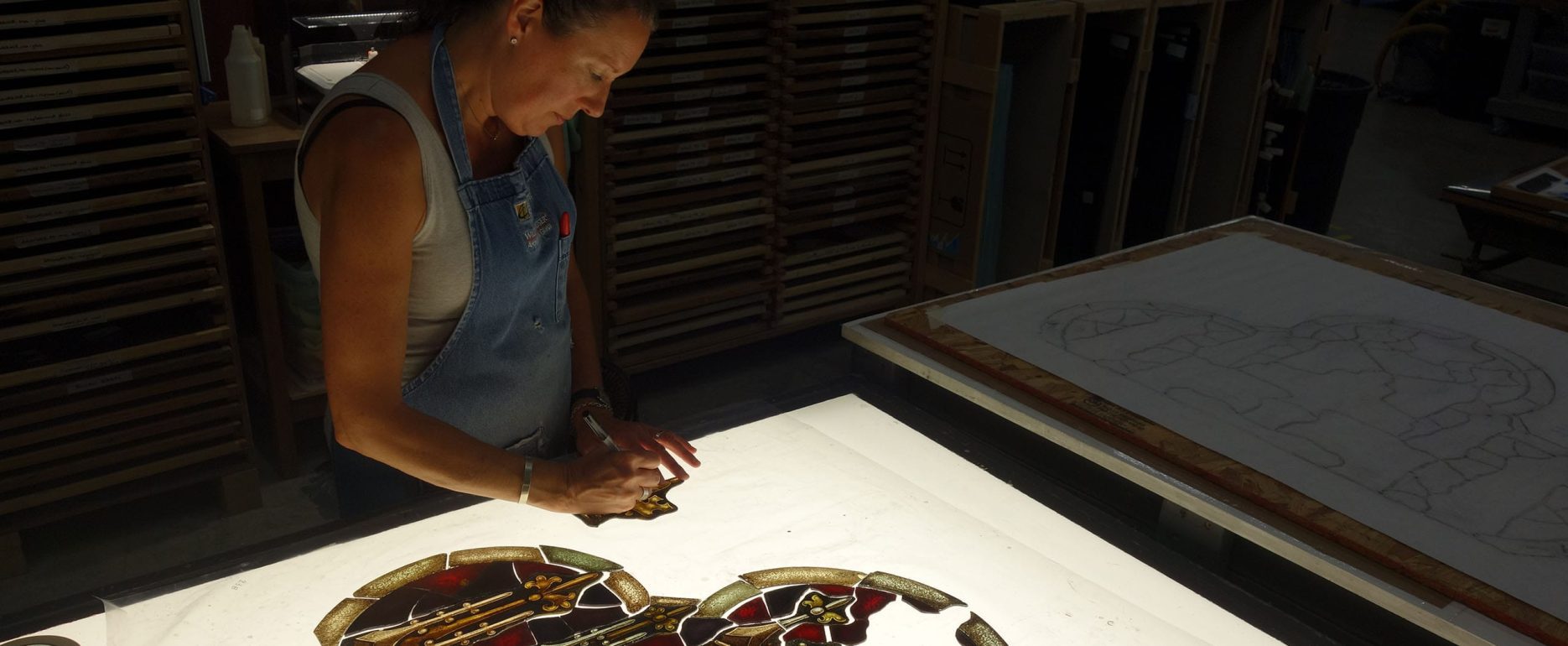
When you walk into a church, how often do you pause to admire the intricate windows that cast colorful light onto the pews? Stained glass windows are far more than decorative elements of a building; they are storytellers of faith, history, and culture. For centuries, these radiant works of art have immortalized biblical events, inspired congregations, and stood as lasting symbols of community and devotion.
But like any masterpiece exposed to time and the elements, stained glass windows face inevitable deterioration. For many churches, maintaining these historical treasures presents a dual challenge of preserving their spiritual significance while managing the logistical and financial complexities of restoration.
At Willet Stained Glass Studios, we believe that restoring church stained glass windows is not only about repairing damaged pieces but about preserving their meaning for future generations. Here, we take an in-depth look at why church stained glass window restoration is critical to maintaining both historical and spiritual integrity and how the right approach can overcome the challenges involved.
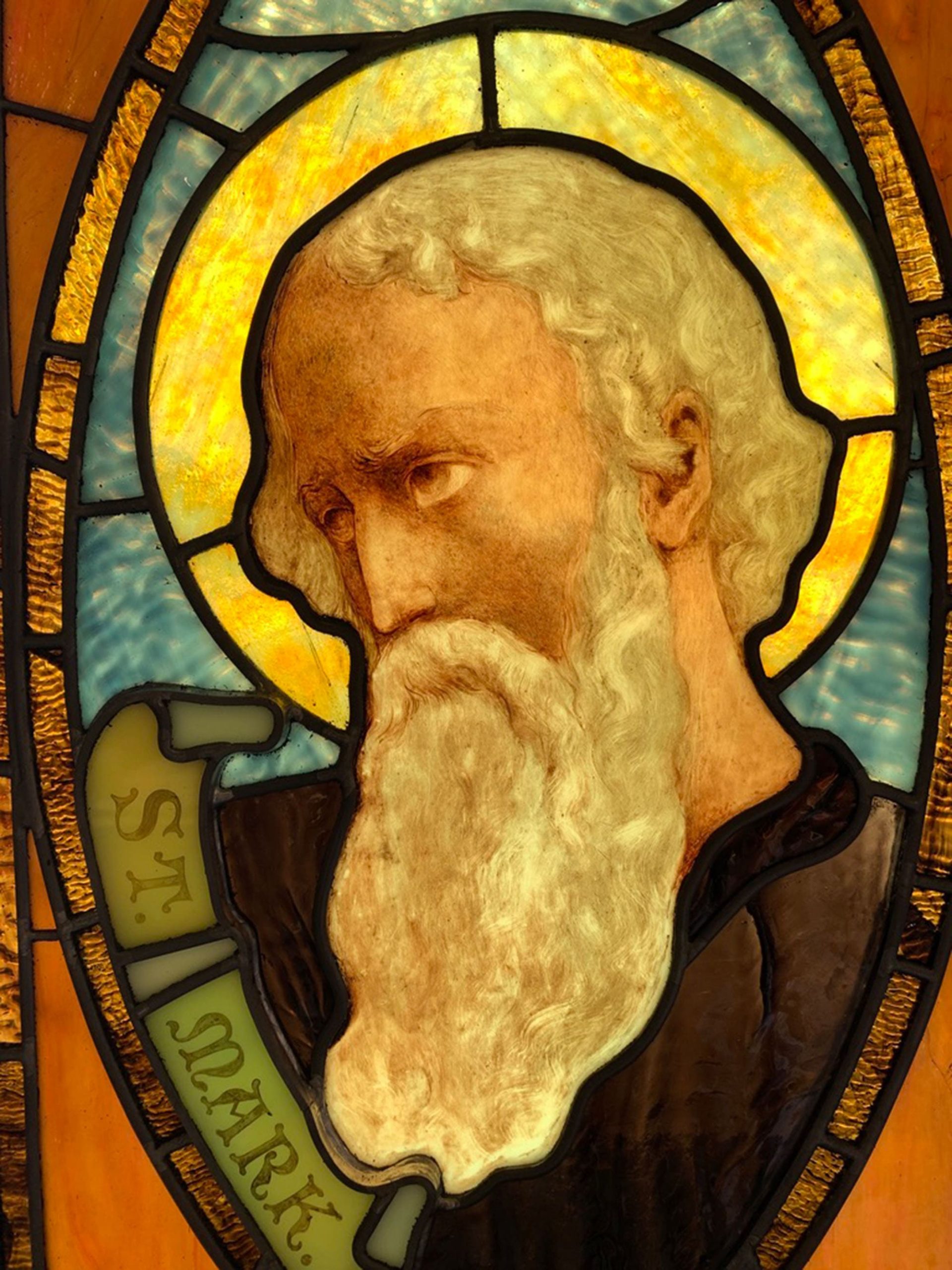
Why Church stained glass window restoration Matters
Stained glass windows transcend their function as architectural features. Their artistic designs and vibrant colors create an atmosphere of reverence and awe, drawing the eye upward and prompting reflection. However, their role does not end in aesthetics. Stained glass preserves a piece of history, celebrates craftsmanship, and carries profound spiritual symbolism that connects communities to their faith and heritage.
Over time, these windows endure the effects of weathering, pollution, and age. Cracked panels, faded colors, and unstable frames can diminish their beauty and compromise their structural integrity. Restoration, therefore, becomes essential – not only to preserve the artistry and craftsmanship but also to protect the narratives and traditions embodied in these works. Each repair process must be approached with reverence and precision, ensuring that original designs and materials are respected while incorporating techniques that improve sustainability and longevity.
Church stained glass window restoration is also a deeply collaborative effort, involving skilled artisans, historians, and often members of the congregation. Restoring a stained glass window is akin to unraveling a story, piece by delicate piece, to understand its creation and the lives it has touched throughout history. Whether repairing intricate lead lines or reviving intricate painted details, each step is a testament to the dedication required to honor traditions while adapting to modern restoration practices.
Ultimately, the restoration of stained glass windows breathes life back into sacred spaces, allowing their light and meaning to shine anew. When treated with care, these windows continue to inspire generations to come, serving as visual sermons of faith, resilience, and artistry. The restored windows reestablish their role as both spiritual beacons and artistic treasures, a reminder of the enduring legacy these sacred spaces embody.
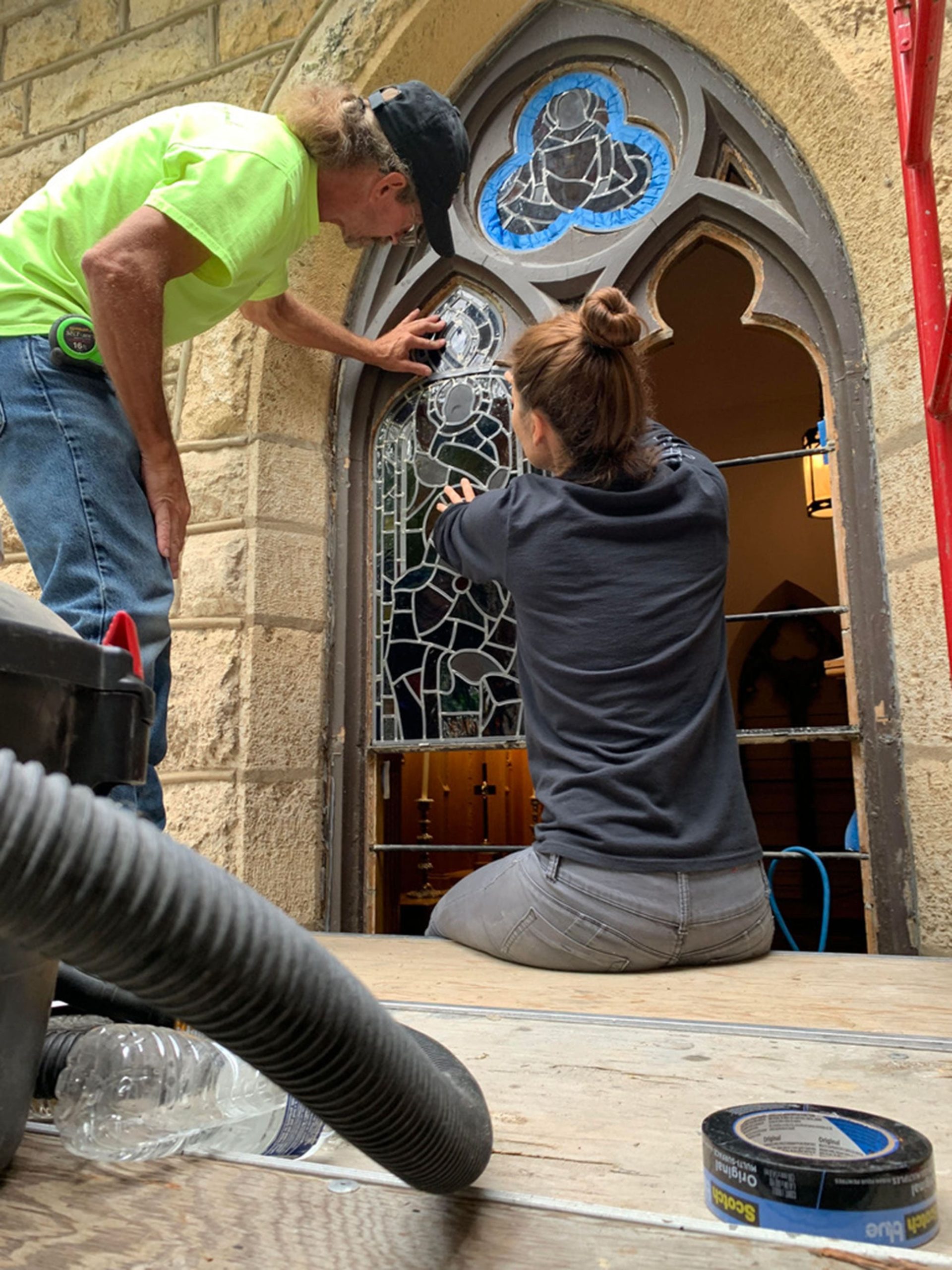
Overcoming the Challenges of Church Stained Glass Window Restoration
1. Funding Limitations and Creative Solutions
One of the biggest hurdles churches face is finding funding for restoration projects. A full restoration can be a significant investment, and many congregations are unsure how to begin.
The good news? Grants and community funding offer a lifeline for church stained glass window restoration. Numerous organizations, including state preservation boards and non-profit foundations, provide financial support for the restoration of historic buildings and their features. At Willet, we’ve worked with countless church administrators to develop plans that maximize funding opportunities, including capital campaigns and local fundraising events.
Beyond financial assistance, securing grants and funding often requires a compelling vision and a clear plan. Organizations offering grants typically seek projects that combine historical preservation with a community-driven purpose. For church administrators, this means not only emphasizing the architectural significance of their building but also highlighting how its restoration will serve the broader community – be it as a place of worship, a hub for outreach programs, or a historic landmark open to visitors. Crafting a persuasive narrative that aligns with the mission of the granting organization can significantly increase the odds of securing funding.
It is also essential to understand the specific requirements and timelines associated with each funding source. Many grant programs involve rigorous application processes, requiring detailed proposals, budget outlines, and evidence of community support. Engaging professionals, whether grant writing specialists or preservation consultants, can be enormously helpful in navigating these complexities. At Willet, our experience in church stained glass window restoration means we know how to guide clients through these challenges, helping to bring their visions to life while preserving the integrity of their historic churches.
2. Finding Qualified Artisans with Expertise in Stained Glass
Not every artisan can manage the intricacies of church stained glass window restoration; finding a trustworthy and skilled team is critical. Without expert knowledge, restoration risks altering the historical authenticity and spiritual impact of these windows.
Willet Stained Glass Studios, with more than 125 years of experience, has served more than 36,000 buildings with a precise focus on maintaining artistic and historical fidelity. Our expert artisans use time-honored techniques passed down through generations to seamlessly restore designs while respecting their original intent.
Every window tells a story, and preserving that narrative demands a delicate balance of technical precision and artistic vision. At Willet Stained Glass Studios, we understand that each piece of stained glass embodies the craftsmanship and passion of its original creator. Our team combines advanced church stained glass window restoration technologies with centuries-old artisan techniques to integrate modern solutions without compromising authenticity. This meticulous approach ensures that each window not only retains its structural integrity but also continues to inspire awe with its timeless beauty.
Whether it’s the vibrant hues of a rose window casting intricate patterns of light or the detailed imagery of a narrative panel steeped in symbolism, our restoration process respects what makes each piece unique. We take pride in collaborating with communities, preservationists, and spiritual leaders to breathe new life into sacred spaces, historical landmarks, and beloved institutions. With Willet Stained Glass Studios, you can trust that your windows will remain cherished treasures, preserving their legacy for generations to come.
3. Balancing Historical Accuracy with Modern Safety Standards
Church administrators often face the delicate decision of how far to modernize during their stained glass window restoration project. While historical accuracy is key, safety cannot be compromised.
Advanced protective glazing is a modern solution that strikes the perfect balance. Applied externally, this glazing shields the stained glass from environmental damage while preserving its visual authenticity. It ensures every restored window maintains both its historical character and structural integrity.
Advanced protective glazing not only offers exceptional durability but also accommodates customization to match the unique requirements of each window. The glazing is crafted to be almost invisible, ensuring that it does not detract from the artistic brilliance of the stained glass. These modern materials are rigorously tested to endure harsh weather conditions more than time, acting as an essential barrier against UV rays, moisture, and debris without altering the viewing experience from both inside and outside the church.
Another benefit of protective glazing is its role in improving energy efficiency and insulation. Historic buildings often struggle with maintaining consistent indoor temperatures, and the added layer of glazing can help regulate heat and cold, contributing to a more sustainable environment. By integrating contemporary safety measures with timeless design, church leaders can honor the sacred and cultural value of their heritage while promoting longevity and resilience in the face of modern challenges.

4. Environmental Damage and Deterioration
Vulnerable to the elements, stained glass faces challenges such as UV damage, moisture intrusion, and temperature fluctuations. more than decades, this results in fading glass colors, leakage through weakened cames, and even outright breakage.
Our approach at Willet is meticulous. When environmental damage demands it, our studio artisans carefully dismantle windows, clean and restore each piece of glass, and rebuild the structure to ensure long-term durability. The application of weatherproofing solutions reinforces the restored windows further against future damage.
Our stained glass window restoration process for churches extends beyond physical repairs – it is a delicate dance between preserving historical authenticity and enhancing structural integrity. Each piece of stained glass carries its own story, and our artisans approach every project with the respect and precision it deserves. From matching century-old glass textures to accurately recreating hand-painted details, every effort is made to honor the original artist’s vision while breathing new life into the window. This balance between artistry and innovation is at the heart of what we do.
Furthermore, we take pride in using advanced materials and techniques to protect these works of art against the ravages of time and environmental elements. Specialized conservation-grade sealants, state-of-the-art support systems, and UV-resistant coatings are all part of our repertoire to ensure the longevity of each restored masterpiece. With every project, our goal remains the same – to safeguard the beauty and historical significance of stained glass windows, allowing them to shine vividly for generations to come.
5. Long-term Maintenance and Preservation Plans
Even the most exquisite stained glass window restoration won’t last without a church’s commitment to ongoing care. Churches often overlook the importance of maintenance until damage appears again.
We emphasize the value of proactive maintenance plans. Through regular inspections, touch-ups, and preventive measures, churches can extend the life of their restored windows. A small annual investment in upkeep can save significant costs in future repairs.
A well-crafted maintenance plan should begin with detailed documentation of the restoration work completed. This includes photographs, notes on the materials used, and any specific instructions provided by restoration experts. Such records not only help ensure consistency in future maintenance but also serve as invaluable resources for future caretakers. By understanding the materials and techniques applied during the original restoration, churches can preserve the artistic integrity of these revered windows for generations.
Additionally, engaging skilled professionals for periodic assessments elevates the effectiveness of a maintenance plan. Restoration specialists can identify subtle issues, such as hairline cracks or weakened lead joints, which may go unnoticed by an untrained eye. Partnering with experienced artisans ensures that any required interventions align with the original craftsmanship, fostering both longevity and aesthetic harmony. By prioritizing professional oversight alongside regular care, churches create a legacy of preservation that honors their history and safeguards their future.
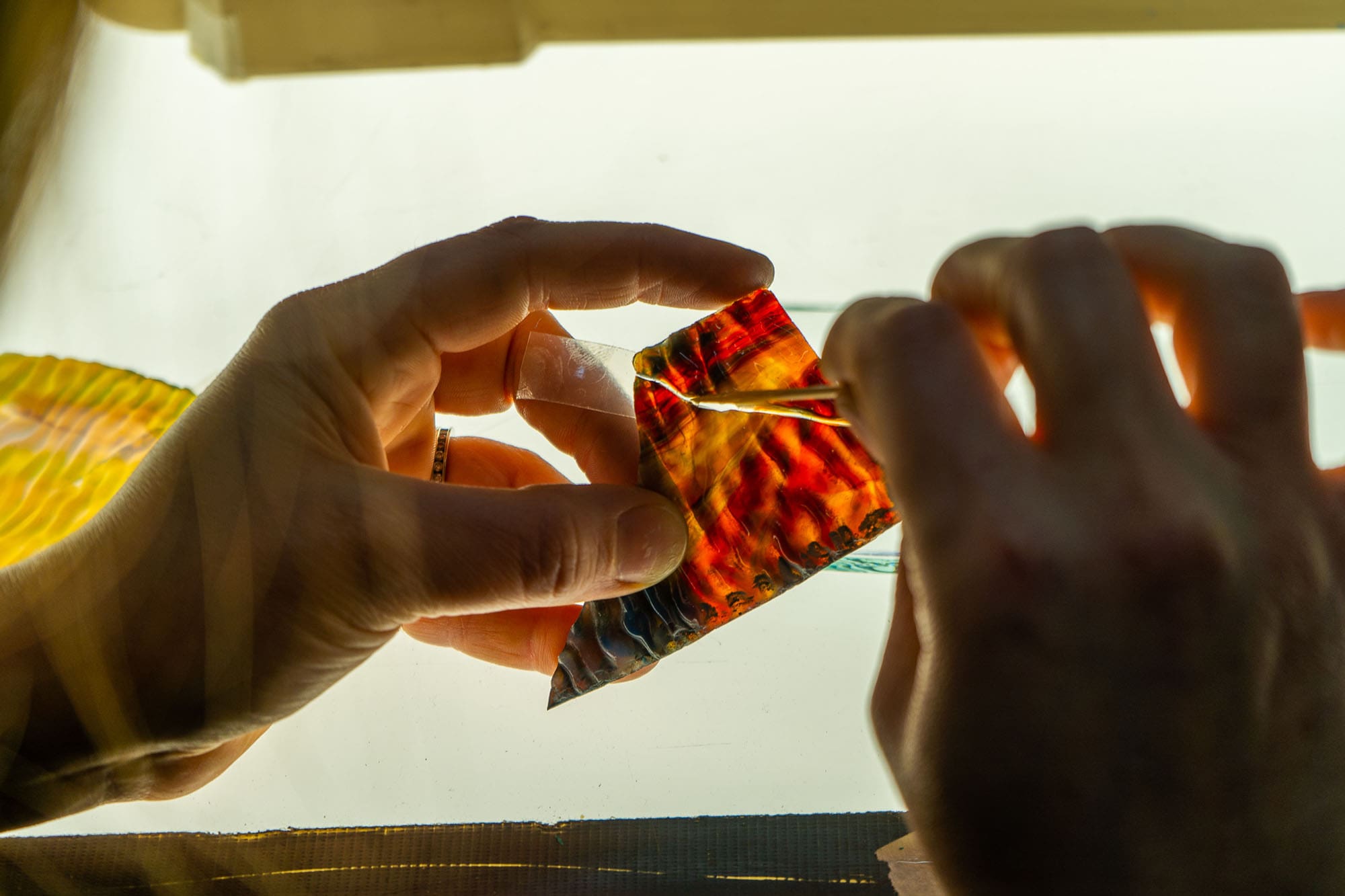
The Spiritual and Cultural Impact of Restored Windows
Restored stained glass windows go beyond mere aesthetics or historical preservation – they reinvigorate a space’s spiritual energy. Congregations find renewed inspiration in designs that are once again vibrant and precise, while a brighter, more welcoming church interior invites new visitors and strengthens the community.
For historians, craftspeople, and church members alike, restoration reaffirms a commitment to safeguarding cultural heritage. Each window repaired is an authentic piece of history saved from deterioration and given a new lease on life.
Beyond their aesthetic appeal, stained glass windows serve as visual storytellers, recounting religious narratives and cultural values that resonate deeply with communities. The restoration process ensures these stories are not lost to time but remain accessible for future generations. The intricate craftsmanship involved in these windows connects us to the artisans of the past, whose skill and devotion imparted meaning into every detail. With each carefully restored pane, we reconnect with this legacy, honoring their artistry while ensuring its endurance.
The process of restoring a church’s stained glass windows is a blend of art and science. Expert craftspeople carefully analyze the original materials, colors, and techniques to ensure historical accuracy in every repair. This meticulous attention to detail transforms restoration from a purely technical endeavor into an act of reverence, where the goal is not only to revitalize the physical structure but also to preserve its symbolic essence. Each decision, from selecting matching glass to reproducing aged textures, echoes a profound respect for the window’s history.
Such efforts bring a tangible warmth and renewed life to sacred spaces, inviting both congregants and visitors to forge deeper connections with their surroundings. Whether during a quiet moment of reflection or a collective gathering, the restored windows inspire awe and contemplation. They transcend their role as decorative elements, becoming radiant beacons of history, faith, and artistry – inviting everyone who experiences them to take part in the enduring story they tell.
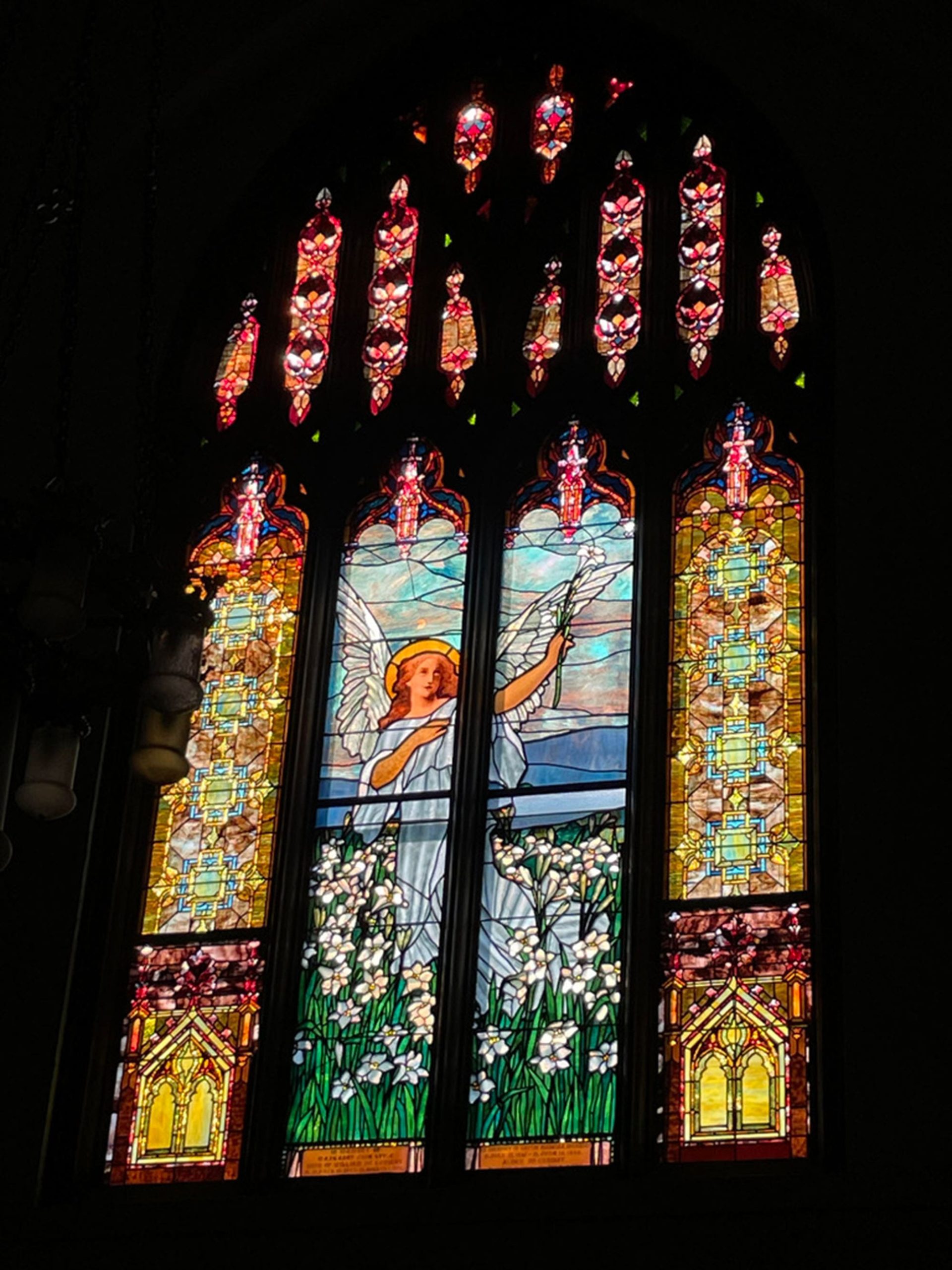
Experience Craftsmanship That Lasts Generations
Restoring church stained glass windows is an art, a science, and an act of devotion. It requires a profound understanding of history, creativity in solving modern challenges, and unparalleled precision. At Willet Stained Glass Studios, we pride ourselves on delivering all three with the highest degree of craftsmanship.
Our process begins with a free inspection and appraisal, ensuring we understand your unique needs while preserving the historical and spiritual significance of your windows. Whether it’s a complete restoration or preventive maintenance, we are committed to helping your church’s stained glass continue to inspire for generations to come.
Schedule your free window inspection today and partner with us in preserving the beauty, history, and spiritual essence of your church. Through proper restoration, we can turn your church’s stained glass windows into a celebration of artistry and enduring faith.







